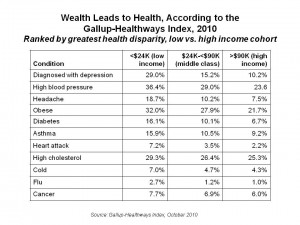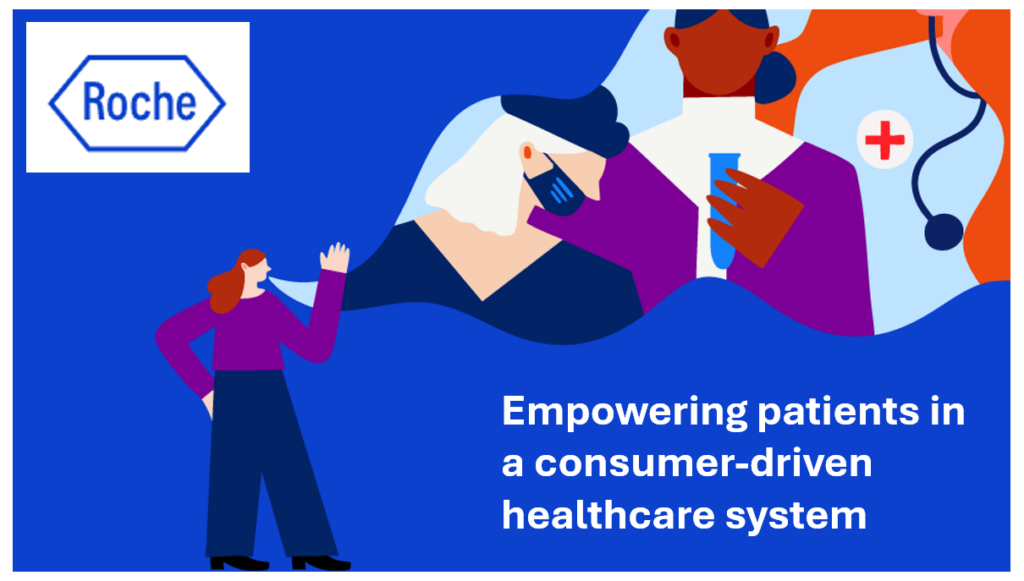 Low income is a risk factor for poor health in America, as quantified by the Gallup-Healthways Well-Being Index. While this finding isn’t news on its own, the health disparities between wealthy people (over $90K a year) and those with low incomes (under $24K a year) are growing. The most prevalent disparities between rich vs. poor Americans are for depression, diabetes, and high blood pressure — driven in part by a nearly 50% difference in the proportion of the poor who are obese — 32% vs. 22% of the wealthy. Cancer, too, appears more common in people with lower incomes, based on the Index.
Low income is a risk factor for poor health in America, as quantified by the Gallup-Healthways Well-Being Index. While this finding isn’t news on its own, the health disparities between wealthy people (over $90K a year) and those with low incomes (under $24K a year) are growing. The most prevalent disparities between rich vs. poor Americans are for depression, diabetes, and high blood pressure — driven in part by a nearly 50% difference in the proportion of the poor who are obese — 32% vs. 22% of the wealthy. Cancer, too, appears more common in people with lower incomes, based on the Index.
Everyday health issues like colds, flu and headaches are also more common among people with less than $24,000 a year.
The Well-Being Index measures 57.2 for people with less than $24,000 a year; 67.7 for people with $24,000 to $90,000 a year; and, 74.3 for Americans with over $90,000 annually.
Reports of colds and flu are also more common, and headaches are more than twice as likely among the low-income group as among high-income Americans.
Finally, people in the U.S. with lower incomes tend to smoke more — three times more than people with more money: 32% vs. 12%.
Methodology: The Gallup-Healthways WellBeing Index is a composite analyzing data from over 265,000 U.S. adults, polled between January and September 2010.
Health Populi’s Hot Points: 1 in 3 of the lowest income Americans do not have health insurance and at least that many lack a medical home. Seeing a dentist is a luxury: only 44% of the poorest Americans have had their teeth checked in the past year.
Gallup points out that, “Low-income Americans face a ‘chicken-and-egg’ problem: preventive care, effective treatment, and health education could all help improve their health and wellbeing, but they are the group that can least afford and has the poorest access to basic health services.” The longer it takes to get uninsured people access to health insurance and, ultimately, medical homes, the worse these challenges will get. It’s the primary care infrastructure that will take care of so many of the poor’s issues which lead to more spending the more delayed the care. With prevention, including scheduled vaccines and early detection, more costs could be averted…and greater public health outcomes realized. Will health reform push the Index up? 2014 is several years away…




 I was invited to be a Judge for the upcoming
I was invited to be a Judge for the upcoming  Thank you Team Roche for inviting me to brainstorm patients as health citizens, consumers, payers, and voters
Thank you Team Roche for inviting me to brainstorm patients as health citizens, consumers, payers, and voters  For the past 15 years,
For the past 15 years,